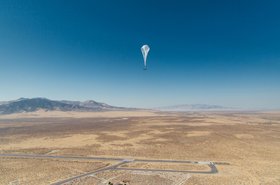Greater connectivity is vital to economic growth in the 21st Century. Half the world's population is still without internet access. In the UK, the ability of companies and people to access high-bandwidth, constant telecom connectivity partly explains the economic disparity between regions. Access to superfast broadband and 5G will be critical to economic growth and greater productivity.
When 5G was first introduced, the industry called it a game-changer. For the first time, mobile phone users could get Internet speeds only ever available with a broadband phone line. 5G is faster and allows more devices than ever to connect to the network. It offers more widespread coverage (no more dead zones) and has the potential to support advanced technologies such as IoT, autonomous vehicles, and virtual and augmented reality. These are some of the technologies that will help drive future economic growth.
Limited coverage
The UK is expected to continue with its limited 5G network deployment plans this year and maintain the same level of coverage until 2025. The network will cover 68 percent of the UK population and 12 percent of the geographical area in the UK, according to Statista.. Covering the whole UK is a challenge. 5G requires a mast every few kilometers. If the UK were to achieve total coverage of 5G, it would require tens of thousands of mast towers. That's a lot of planning applications as well as cost!
The risk is that 5G becomes a technology just for metro areas like London, doubling down on the economic status quo rather than becoming a way of leveling up the UK. Businesses won't consider relocating to areas outside London if they think they won't have the same connectivity.
The UK Government says it wants to turn the UK into the tech capital of Europe. This plan, it hopes, will grow the economy, create high-skilled, well-paid jobs, and mean the UK is no longer as reliant on overseas technology. Connectivity will be vital to delivering this.
However, to achieve this, we need to find solutions to provide 5G at speed with far less infrastructure. Currently, there has been much focus on Low Earth Orbit satellites such as Starlink and OneWeb. However, these systems cannot connect directly to user devices without expensive and limited-range satellite ground terminals and won’t be able to provide the high-speed direct communications network on which so much of our future depends. Spectrum for satellite operators is also a significant challenge. Access to the frequencies needed to provide telecommunications services has been determined by hugely costly government auctions which block access to service providers not able to outbid other service providers.
In addition to spectrum, satellite operators also need landing rights to service and connect in a specific country. Meanwhile, launching things into space is significantly more expensive, highly polluting, and time-consuming, and even the most minor glitch can turn an expensive piece of kit into another orbiting tin can.
Companies are now investing in other innovative and financially viable solutions. These include using un-crewed aircraft termed High Altitude Platforms (HAPs) in the stratosphere, which can provide a full 5G at 200Mbps per user across all geographies, weather, and terrains. As well as bringing 5G to the world's remotest parts, these services can connect everyone in the UK to 5G with much less infrastructure. Just 24 aircraft could cover the entire UK with 5G.
Low emissions
Powered by a zero-carbon emission hydrogen fuel system, with the wingspan of a Boeing 787 Dreamliner, the HAP can circulate in the stratosphere – the second layer of Earth’s atmosphere – to beam internet down to hard-to-reach rural areas.
Furthermore, unlike satellites which can cause debris in space, these aircraft be easily replaced. Suppose there is an issue, then the aircraft formation can be adjusted, or a spare aircraft launched. It is also much more energy efficient, removing the need for energy-consuming towers and other infrastructure, while one un-crewed aircraft can replace the need for around 450 terrestrial towers.
Unlike a satellite platform, this technology can directly connect to mobile handsets, with no special terminals needed, and will deliver significantly higher connectivity speeds. As it’s closer to the user, the signal is stronger, and the antenna transmits about five times as much data as a satellite over a much smaller area.
It has been reckoned that HAPs could save billions in capital expenditure, and they have been described as "the most exciting technology since the advent of the fiber optic cable".
It’s clear that solving our connectivity conundrum will require more than just satellites, and the investment into areas like un-crewed systems and high-altitude platforms could be a simpler and more cost-effective solution, whilst at the same time placing the UK at the fore of this essential technology and making a significant contribution to the development of the UK as a ‘science superpower’ which is so essential to our economy and the prosperity of future generations.


